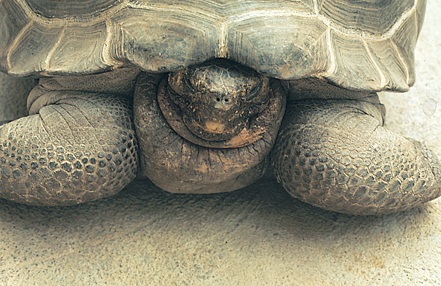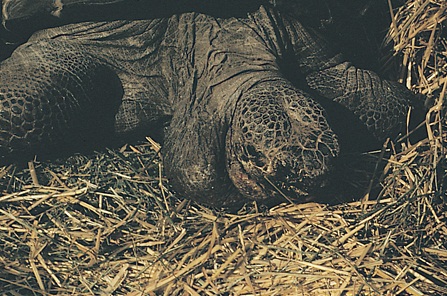Reptiles and Amphibians Q&A 17
| This question was provided by Manson Publishing as part of the OVAL Project. See more Reptiles and Amphibians Q&A. |
These two adult Galapagos tortoises were fed a diet of mixed vegetables, with a preponderance of cabbage, for over one year. All the tortoises within the collection who were fed the same diet display similar lesions.
| Question | Answer | Article | |
| What is your diagnosis? | Hypothyroidism leading to the formation of fibrous goitres. |
Link to Article | |
| What causes this condition? | In this instance, the feeding of a diet consisting mostly of cabbage (which contains goitrogens) induces diminished function of the thyroid gland and its synthesis and secretion of thyroxin. This is a condition common to herbivorous reptiles that have evolved in volcanic island habitats in which halogen- (iodine, chlorine, fluorine and bromine) sequestrating plants predominate over those that do not concentrate halogens in their tissues. |
Link to Article | |
| What is the treatment for this disorder? | Administer a source of iodine every five to seven days, eg, sodium- or potassium iodide solution (0.25–0.50mg/kg i/v or orally) or Lugol’s solution (0.5–2.0mg/kg orally). |
Link to Article | |
| What measures can be taken to prevent it? | Supplement the diet with kelp tablets; the dosage of this form of iodine is not critical because kelp is essentially non-toxic when used as a dietary supplement for giant tortoises. Depending upon their iodine content, a 150–200kg tortoise could be given three to six tablets weekly. |
Link to Article | |

